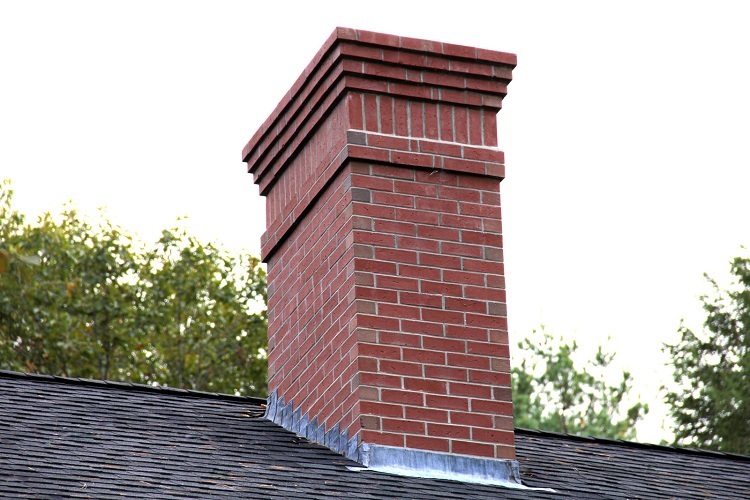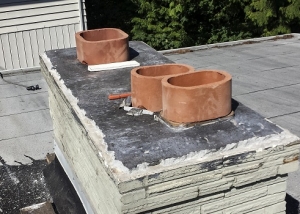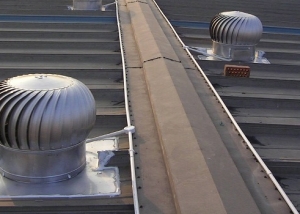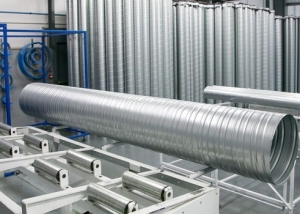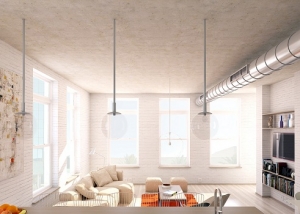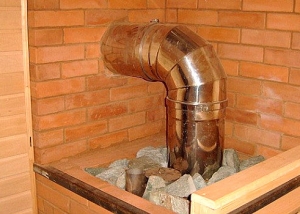Chimneys are vertical devices that provide the outlet into the atmospheric space of flue gases and other combustion products generated during the operation of heating boilers or furnaces. This contributes to environmental safety by preventing pollution of the surrounding space and eliminating the threat to human health. The presence of such a device that creates natural traction contributes to a more efficient operation of the heating unit.
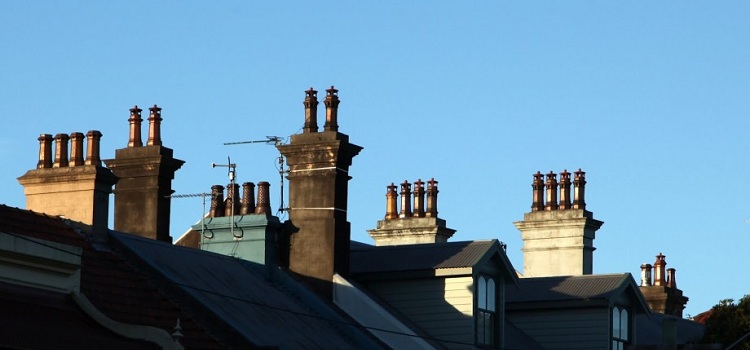
Chimneys for boiler rooms and domestic stoves are built from different materials - brick, metal, ceramics and even plastic
Content
Chimney classification
Based on the intended purpose, chimneys can be divided into:
- intended for boiler rooms of industrial type;
- stoves, with their help heating of private houses is arranged.
Chimneys for boiler rooms vary depending on what the supporting structure is. She may be:
- self-supporting (single-barrel or multi-barrel). Roof mounted self-supporting pipe is mounted inside the building. The self-supporting metal chimney is composed of three-layer sandwich pipes, so it can be disassembled and transported for installation in a new location. Use is limited by the requirements for combustion products (temperature - not more than 350º C and chemical aggressiveness) and levels of snow and wind load;
- the column. Stainless steel inner tubes coated with heat insulation are inserted into the carbon steel outer shell. The structure is fixed in an anchor basket (baskets), poured into the foundation. A boar (gas duct) of a column chimney can connect several boilers;
- front (near-front). Attached or built-in chimneys are attached to the walls with brackets. The trunk has a three-layer structure - the inner layer is made of stainless steel, the intermediate one is heat-insulating, the outer one is made of galvanized steel. The weight load falls on the additional lower base, the wind - on vibration-isolating mounts. Modules of this design are easy to change and repair. The manufacture and maintenance of facade chimneys is the most economical, since it is not necessary to build a foundation and supporting structures, but just attach the pipes to the wall;
- farm. Truss chimneys are usually installed in earthquake-prone places. On the truss structure, fixed in the anchor basket, poured into the foundation, from one to six pipes are fixed;
- mast. Each metal pipe is attached to a three-, four-mast support tower. The base is a concrete pillow on which structural elements are fixed in stages, from bottom to top on rivets or screws. Steel braces ensure stability and compensate lateral load.
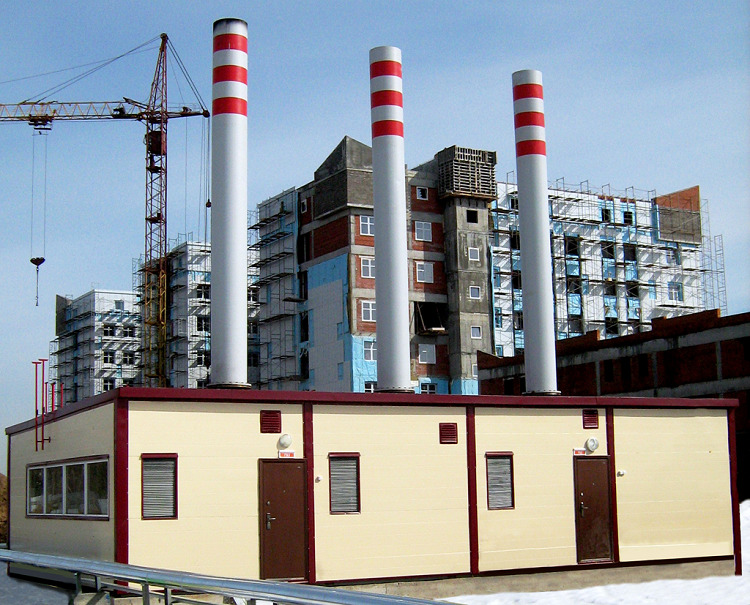
Self-supporting pipes are fixed inside the building, their installation is calculated taking into account the load in adverse weather conditions
Chimneys, based on the location, are divided into:
- indigenous. Equipped with their own foundation nearby heating devices;
- mounted. The most common type, the pipe is mounted directly on the heating device;
- outboard.It is customary to install outside if the house is small in size so as not to clutter up the space;
- wall. In this case, there is no need for fixing the chimney to the wall, since it is built directly into the wall during the construction phase of the building. Due to the complexity of the service, this type is not widespread.
According to the indicator of the use of insulation during installation, chimneys are divided into:
- uninsulated.
- insulated. In three-layer structures, the inner layer is insulated, and metal is used for the chimney frame.
Note! The installation of non-insulated modular stainless steel systems is usually carried out inside buildings.
In the production of chimneys according to safety rules can be used as the main material:
- brick. Such structures are gradually becoming a thing of the past, despite a high degree of fire safety, good mechanical strength and heat capacity. The throughput is reduced due to soot overgrowing, and the brick frame is destroyed under the influence of acids formed by the reaction of sulfur oxide contained in soot with water, as well as due to changes in heating mode and under its own weight;
- ceramics. Modern modular ceramic structures, designed for operation over 120 years, are characterized by a reduced wall thickness and, consequently, weight, an operating temperature of 600º C, the ability to continue working with direct fire for one and a half hours;
- steel. The advantages of a metal chimney made of stainless or galvanized steel include universality, which allows the use of all types of heating devices, a smooth inner surface that does not allow soot to linger, low heat capacity and ease of assembly and maintenance;
- plastic. Polypropylene and polyvinylidene fluoride structures are easy to assemble, wear-resistant and resistant to corrosion, but the temperature of the working medium should not exceed 120º С. Fiberglass products can be operated at a temperature of flue gases up to 180º C.
What are the requirements for SNiP chimneys
Joint ventures to chimneys cannot but put forward rather strict requirements. The construction of such a structure that effectively performs its functions is not one of the simple engineering tasks. A well-designed project provides many years of trouble-free operation. The height of the structure, for example, is calculated based on OND-86, depending on the type of heating device. Separate SNiPs regulate such essential parameters for the construction of chimneys as:
- wind load level;
- structural strength;
- arrangement of the foundation;
- selection of anchor bolts.
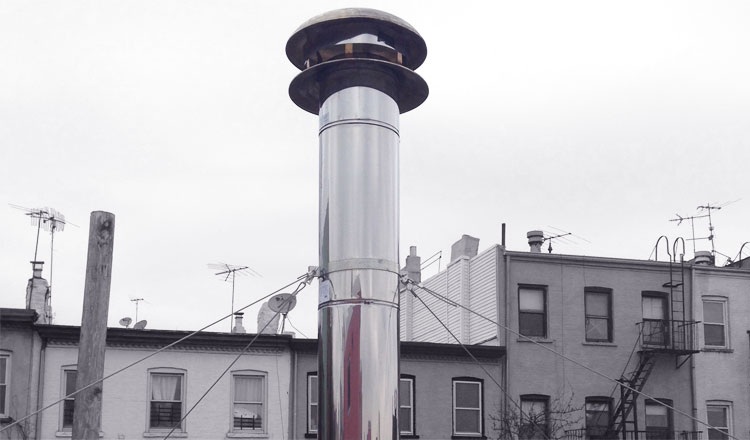
One of the main requirements for the chimney is stability, therefore, with strong wind loads, additional fasteners are used
When designing, according to these rules for chimneys, the following must be taken into account:
- placement of the main part of the structure inside the building;
- achievement of the minimum five-meter height measured from the heating device;
- the chimney draft, its height and diameter must correspond to indicators ensuring optimal functioning of the structure;
- compliance with the proportions between the height of the product and the ridge of the roof of the building, as well as other protruding elements;
- fastening to the walls should be done by placing the clamps at a distance of one and a half meters in a straight line and, in addition, in front of the corner bends and behind them;
- compliance with fire safety standards.
Examination of industrial safety of chimneys (EPB) is required to be carried out on the basis of law No. 116-FZ. The following facilities are subject to verification:
- height from 20 meters;
- located on a separate foundation;
- located on the territory of the production facility, classified as dangerous.
An expert examination of the industrial safety of the chimney consists of the following measures:
- it is checked in what condition the surfaces and annulus are;
- the strength of structures and the level of corrosion development are evaluated;
- determination of draft and roll of the chimney;
- actual performance indicators are identified;
- it clarifies how identified defects have affected the performance and safety of operation;
- recommendations are developed to eliminate identified deviations;
- a conclusion is drawn up on the possibility of further exploitation.
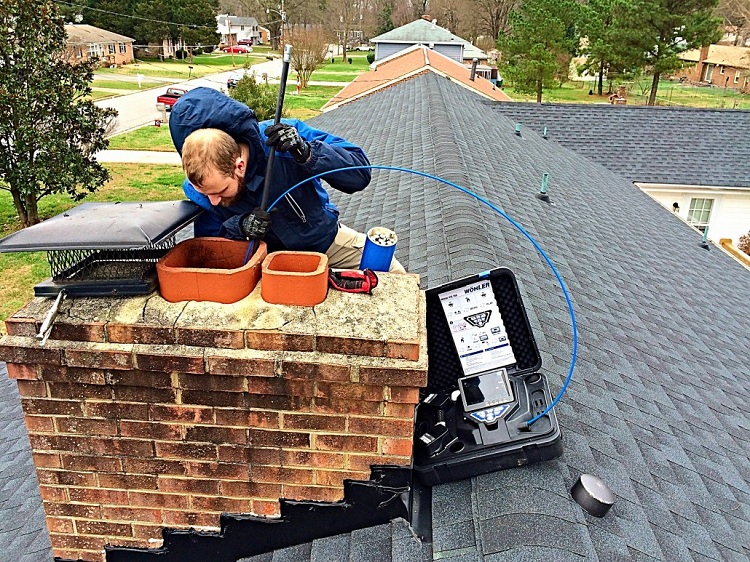
Any chimneys must be inspected regularly to eliminate malfunctions in time, clean and do other work.
Note! Examination and inspection of the chimney seems to be necessary measures, the implementation of which is actually based on PB 03-445-02, canceled by order No. 287 of Rostekhnadzor back in 2014.
The main reasons for the examination:
- safety rules at many sites are not respected;
- many pipes commissioned back in the Soviet period, the estimated life is unreasonably extended;
- construction of chimneys was often carried out either with significant deviations from the design documentation, or according to a poorly executed project.
Upon completion of the construction of chimneys, special marking and painting of chimneys. Painting a high-rise object is quite difficult to do, it involves passing through several stages, starting with the primer. Therefore, the general estimate includes an estimate for the coloring of the chimney, since the area of the surface to be painted is large and it is difficult to get to areas that have not yet been painted. Such works require some mountaineering training and special equipment, so the prices for their implementation are quite high, as well as high-altitude work in general.
Mandatory is not only the application of marking, but also the light protection of high-rise industrial chimneys. These objects are classified as aerodrome obstacles, therefore, their designation on the ground with the onset of dusk and darkness, as well as with a deterioration in visibility, is necessary. It is necessary to place protective lighting on each tier and in the upper part, one and a half to three meters from the edge.
Important! Upon completion of all work, including the installation of a lightning rod, and the launch, a chimney passport is issued.
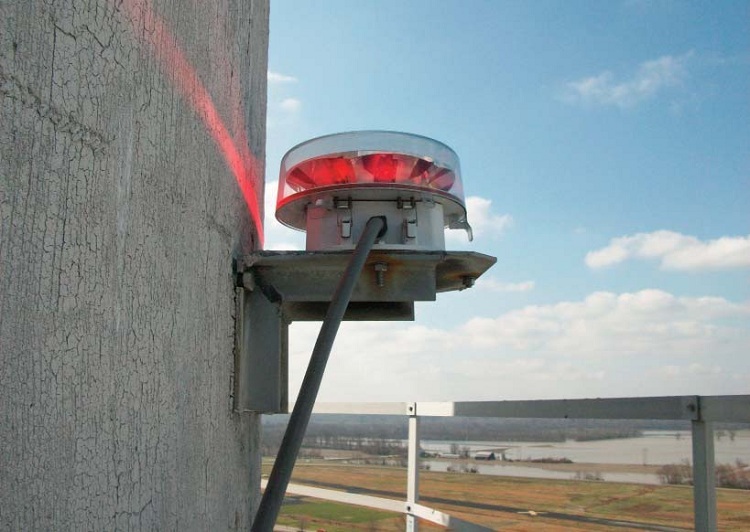
High-rise chimneys are necessarily equipped with a backlight, the lights of which are located on each tier and at the very top of the structure
Chimney dismantling procedure
Dismantling a high-altitude chimney is prohibited in the absence of a development project. PPR for dismantling the chimney is a voluminous collection, which includes all types of routine maintenance and takes into account possible risks. A typical list consists of:
- familiarization sheet with PPR;
- explanatory note with full data on the object and methods of dismantling;
- schedule plan;
- schedules (removal of construction waste, movement of workers across the territory);
- routing of the general procedure for dismantling;
- technological map of disassembly of structures;
- general provisions of labor protection property;
- fire safety standards;
- environmental standards.
Chimney demolition is carried out in stages, deviations are fraught with dangers for workers:
- The condition of the object is analyzed, the surroundings are examined, and technical documentation is studied.
- Based on the analysis of the obtained data, a dismantling method is selected.
- Technical measurements are being performed.
- A permit is issued for the dismantling and decommissioning of the facility on time.
- Demolition is underway.
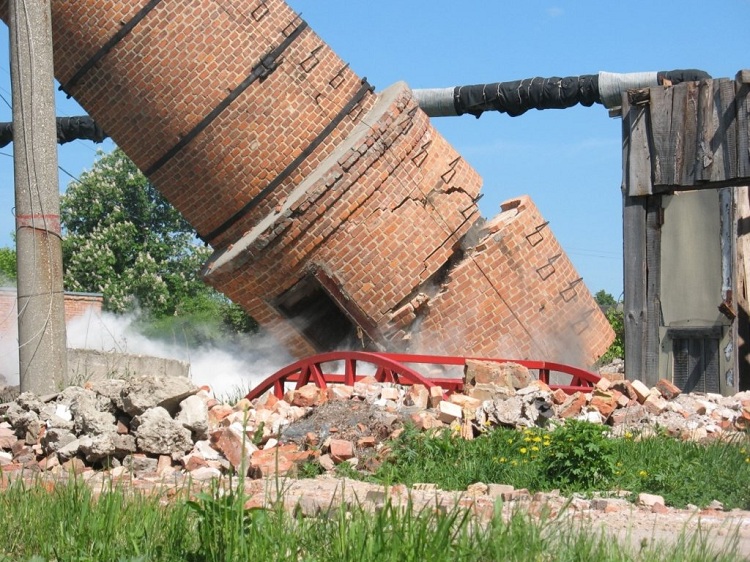
The method of dismantling the pipe is selected depending on its type and condition, a simple roll is often used for brick structures
Technologically, the demolition can be carried out in the following form:
- simple rolls when individual pieces break off;
- directional explosion;
- gradual disassembly, when the disassembled is usually taken out to a separate site or dumped into the interior of the structure;
- rolls using special supports, which allows you to control the slope of the structure during the work.
Dismantling methods differ in the features and advantages:
- the use of industrial mountaineering is considered the most economical and environmentally friendly, but the dismantling (from top to bottom) will be delayed, since expensive large-sized equipment is not used;
- the use of rolls is associated with special thoroughness of preparatory measures and the construction of temporary supports. But the demolition, starting from the bottom, is limited in time and material costs;
- The use of a directed explosion is possible only after obtaining all permits and conducting approvals. This requires time and considerable resources, including security. But the demolition is quick and you can dismantle the directional explosion chimneys of all kinds.
Good to know! Most often, brick structures are dismantled, which does not require special expenses. In addition, costs can more than be offset by reuse of materials.
Without chimneys, it is difficult to imagine the space around us. Despite the simplicity of the external appearance, these structures perform very important and useful functions, and their construction requires numerous and very complex calculations. Deviations from the rules for preparing facilities for operation result in inappropriate work and a reduction in the guaranteed service life. A very significant problem seems to be the lack of proper control over the condition of the chimneys and the development of a guaranteed resource by most of them.
